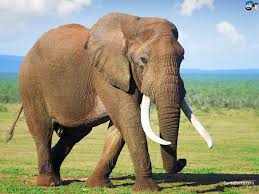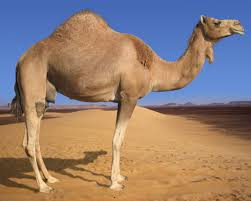Chapter 7: Evolution Class 12 Biology NCERT Solutions
Learn the origin of life, Darwin’s theory, and evolutionary patterns with Chapter 7 NCERT Solutions. Download free PDFs for fast revision. Scroll below to practice all solved exercises and enhance your Biology score.
To Help You Excel: NCERT Solutions for Class 12 Biology Chapter 7 – Evolution
Our comprehensive NCERT Solutions for Chapter 7 provide well-structured answers to all textbook questions, including Intext and Exercise sections. These answers are crafted to help students grasp evolutionary concepts through simple language, scientific evidence, and real-life examples.
What You Will Learn in Chapter 7 – Evolution
This chapter helps students understand how life evolved over time and how species adapt, change, or become extinct. It also covers the timeline of human evolution, molecular evidence for evolution, and mechanisms of genetic variation.
Key Topics Covered:
1. Origin of Life
– Primitive Earth conditions
– Miller-Urey experiment and chemical evolution
– Formation of biomolecules and cell-like structures
2. Theories of Evolution
– Lamarck’s theory vs Darwin’s theory
– Natural selection and survival of the fittest
– Industrial melanism and adaptive radiation
3. Evidence of Evolution
– Paleontological, embryological, anatomical, and molecular evidence
– Fossil records and transitional forms
– Homologous and analogous organs
4. Mechanisms of Evolution
– Mutation, genetic drift, gene flow, recombination
– Hardy-Weinberg equilibrium and its significance
– Evolutionary forces disturbing genetic equilibrium
5. Speciation and Evolutionary History
– Types of speciation: allopatric and sympatric
– Evolution of vertebrates and humans
– Brief timeline from prokaryotes to Homo sapiens
Why Use Our NCERT Solutions for Chapter 7?
Our answers are designed to help you develop a strong conceptual understanding of evolutionary principles using clear explanations, diagrams, and flowcharts. Whether you’re preparing for board exams or NEET, these solutions will boost your confidence.
Highlights of Our Solutions:
– Answers to all NCERT Intext and Exercise questions
– Concept-focused explanations with supportive diagrams
– Real-world examples like peppered moth and adaptive radiation in Darwin’s finches
– Key definitions and facts highlighted for quick revision
– Flowcharts and tables to compare theories and mechanisms
NCERT Solutions for Chapter 7 – Evolution
Intext Questions:
– Clear answers to concept checkpoints across the chapter
– Definitions and distinctions between theories of evolution
– Examples of evolutionary adaptations and evidence
Exercise Questions (Q.1 to Q.11):
– Detailed explanation of Darwin’s theory, Hardy-Weinberg principle, and speciation
– Real-life examples of natural selection and genetic drift
– Human evolution timeline and key evolutionary events
Download Chapter 7 Solutions PDF – Evolution
Access all NCERT Solutions in a handy, printable PDF format. Ideal for offline reading, exam revision, and quick reference.
What’s Inside the PDF:
– Neatly formatted and structured answers
– Diagrams of evolution pathways, fossil record comparisons
– Clarified complex terms and definitions for exam success
Recommended Preparation Tips:
– Memorize key concepts like genetic drift, mutation, and natural selection
– Practice drawing phylogenetic trees and evolutionary timelines
– Compare evolutionary theories using a tabular format
– Understand Hardy-Weinberg equation and apply it to numerical problems
– Review human evolution and note important ancestral species
Additional Study Resources:
– Class 12 Biology Notes – Chapter 7
– NCERT Exemplar Questions with Solutions
– NEET-focused MCQs and assertion-reason questions
– Revision flowcharts for theories and types of evidence
– Human evolution chart for quick learning
Understand the Past to Master the Present
Evolution is the story of life’s transformation over billions of years. With our accurate NCERT solutions and rich supporting materials, you’ll be able to explain how life evolved and why certain traits prevail. Strengthen your Biology preparation and excel in both board exams and entrance tests.
NCERT Solutions for Class 12 Biology Chapter 7 – Evolution
1. Explain antibiotic resistance observed in bacteria in light of Darwinian selection theory.
According to Darwin’s theory, organisms with favorable variations survive and reproduce. When a population of bacteria is exposed to an antibiotic, sensitive bacteria die, while those with mutations that confer resistance survive and multiply. Over time, the resistant bacteria become predominant in the population, illustrating natural selection.
2. Find out from newspapers and popular science articles any new fossil discoveries or controversies about evolution.
Recent fossil discoveries, such as those of feathered dinosaurs in China, have provided insights into the evolution of birds from reptiles. Additionally, debates continue over the classification of certain hominin fossils and their implications for understanding human evolution.
3. Attempt giving a clear definition of the term species.
A species is a group of organisms that can interbreed and produce fertile offspring under natural conditions.
4. Try to trace the various components of human evolution (hint: brain size and function, skeletal structure, dietary preference, etc.).

Human evolution involved several changes:
- Brain size: Increased from about 450 cm³ in early hominins to approximately 1350 cm³ in modern humans.
- Skeletal structure: Transitioned to bipedalism with changes in pelvis and limb structure.
- Dietary preference: Shifted from primarily plant-based to omnivorous diets.
- Tool use: Development and use of tools for hunting and other activities.
5. Find out through the internet and popular science articles whether animals other than man have self-consciousness.
Studies suggest that certain animals, such as dolphins, elephants, and some primates, exhibit signs of self-consciousness, demonstrated through behaviors like mirror self-recognition.
6. List 10 modern-day animals and using the internet resources link it to a corresponding ancient fossil. Name both.
| Modern Animal | Ancient Fossil |
|---|---|
| Man | Homo sapiens |
| Dog | Leptocyon |
| Chimpanzee | Dryopithecus |
| Elephant | Moeritherium |
| Horse | Eohippus |
| Gorilla | Dryopithecus |
| Camel | Protylopus |
| Whale | Protocetus |
| Fish | Arandaspis |
| Octopus | Belemnite |
7. Practise drawing various animals and plants.
(1. Elephant)

(2. Camel)
(3. Dog)
(4. Rose)

(5. Dahlia)

(6. Hibiscus)
8. Describe one example of adaptive radiation.
Darwin’s finches in the Galápagos Islands are a classic example. They evolved from a common ancestor into multiple species with different beak shapes and sizes, each adapted to specific food sources.
9. Can we call human evolution as adaptive radiation?

Yes, human evolution exhibits adaptive radiation. Different human species evolved with adaptations to diverse environments, leading to variations in physical and cultural traits.
10. Using various resources such as your school library or the internet and discussions with your teacher, trace the evolutionary stages of any one animal say horse.
The evolutionary stages of the horse include:
- Eohippus: Small, multi-toed ancestor.
- Mesohippus: Larger body, reduction in toe number.
- Merychippus: Further toe reduction, development of high-crowned teeth.
- Pliohippus: Single-toed, more horse-like features.
- Equus: Modern horse with a single toe and advanced teeth for grazing.